The impact of PANDA is to contribute to the reduction of Greenhouse gases (GHG) by increasing the number of electrified vehicles. To fully adhere to this principle, the project needs to account for GHG emissions produced by its own activities (travels of partners, energy for testing, etc.). The project’s GHG emissions will surely be lower than the GHG indirectly prevented by this project. However, the ecological footprint of PANDA is not in agreement with the project philosophy. In order to deal with this “environmental impact” a “carbon care action” is carried out. This action aims to put PANDA as an exemplar project in agreement with its main impact, i.e. reducing the GHG emitted.
Carbon Care principle
Based on ULille previous experiences (https://l2ep.univ-lille.fr/en/carbon-care), a carbon care action is realized to reduce and mitigate the GHG emissions of the project. It is composed of different steps: awareness, GHG reduction, GHG estimation, and GHG mitigation.
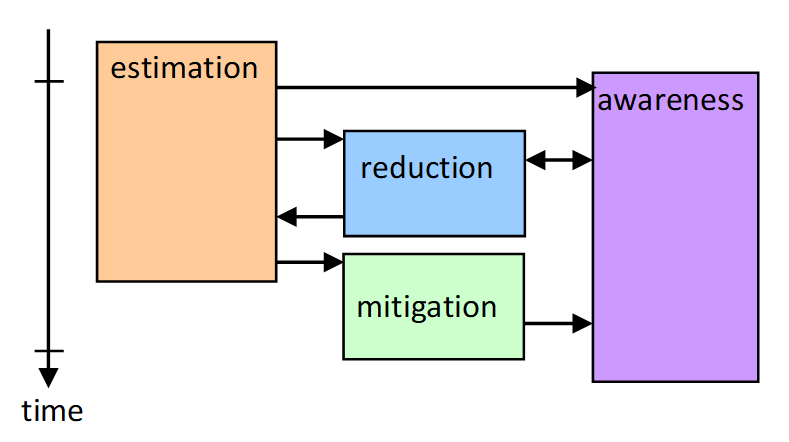
Awareness and GHG reduction
Since all project activities emit GHG, it is important that partners are aware of the different aspects of the Carbon Care action in order to 1) be informed from the beginning and take active and conscious participation in the project’s choices 2) have the right figures for the assessment step, 2) reduce the GHG by making informed decisions when possible (e.g. videoconference instead of travelling for meetings).
GHG estimation
ULille approach was adapted in order to fit a research project and cover its different aspects, i.e. the development, the management, and the dissemination phases over the whole duration of a project.
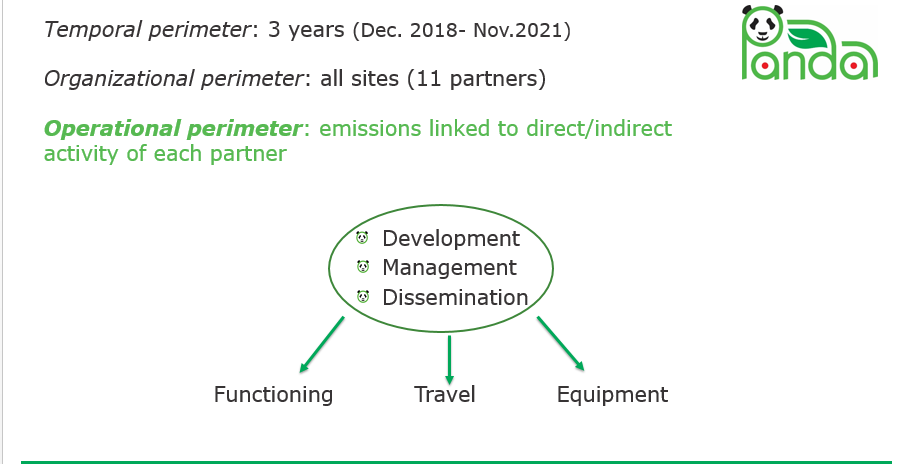
In order to carry out the assessment, the project manager has been certified by the ABC (“Association Bilan Carbone” or Carbon assessment association) after her training with the ADEME (French ecological transition agency) focused on the “Bilan Carbone” method. The estimation of PANDA-related GHG emissions was updated all along the project thanks to carbon referents chosen by each project’s partner, who gather data needed for the carbon assessment. Inquiries were also conducted for numerical activities (carbon cost of numerical calculation, videoconference, or website) as databases do not provide yet inputs for these relatively new topics. At the end of the project, the GHG emissions were evaluated to 209.27t CO2eq. Their distribution show that much of them is due to travels.
Mitigation of GHG
The carbon care action involves a mitigation part. To define a mitigation budget, the amount of GHG emissions has been converted into money, based on the average of carbon price over the duration of the PANDA project. 10k€ were then dedicated to a mitigation action, that is 0.3% of the project grant. Dedicated mitigation actions have been proposed and discussed with the partners. Considering the European dimension of the project, a European action has been chosen through Transylmagica association in Romania https://www.forest.transylmagica.com/.
According to our budget, Transylmagica association proposed us various types of seedings and a place to plant our future trees. 3 500 sessile oaks and 3 500 spruce and beech have been thus planted in April 2023 in the Eastern Carpathians. Romanian colleagues (RTR and SISW) from the PANDA project took part in the planting on the 22nd , the Earth Day.
Since, Transylmagica has been taking care of the PANDA plantation. During the first years, they provide constant monitoring and care for the plantation’s survival, the establishment of a strong root system and the development of sturdy stem.
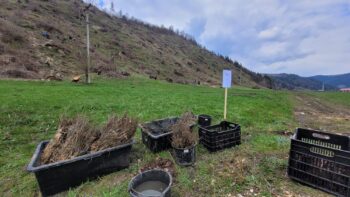
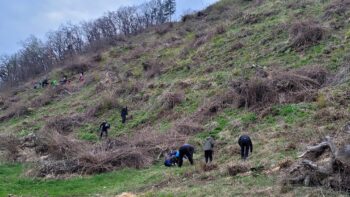
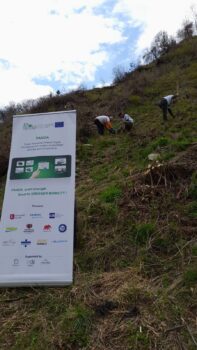

The report of PANDA mitigation action is available here: 1. PANDA project trees_Carbon Sequestration.pdf
Feedback from EC
The PANDA mid-term evaluation was the opportunity to show our “Carbon Care” approach to the experts of the European Commission. Their feedback was very positive and they indicated their willingness to develop such an initiative for other projects funded by the EU!